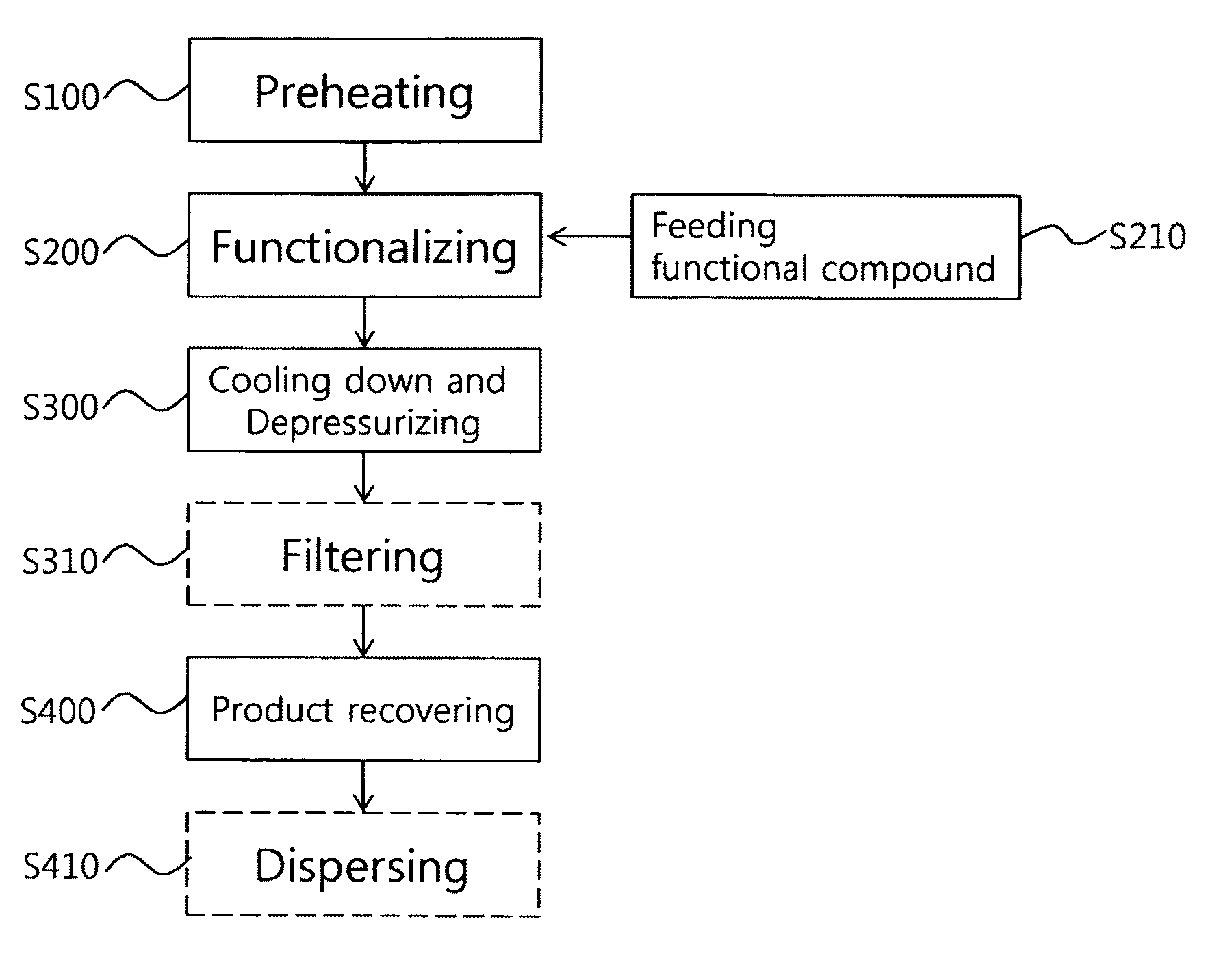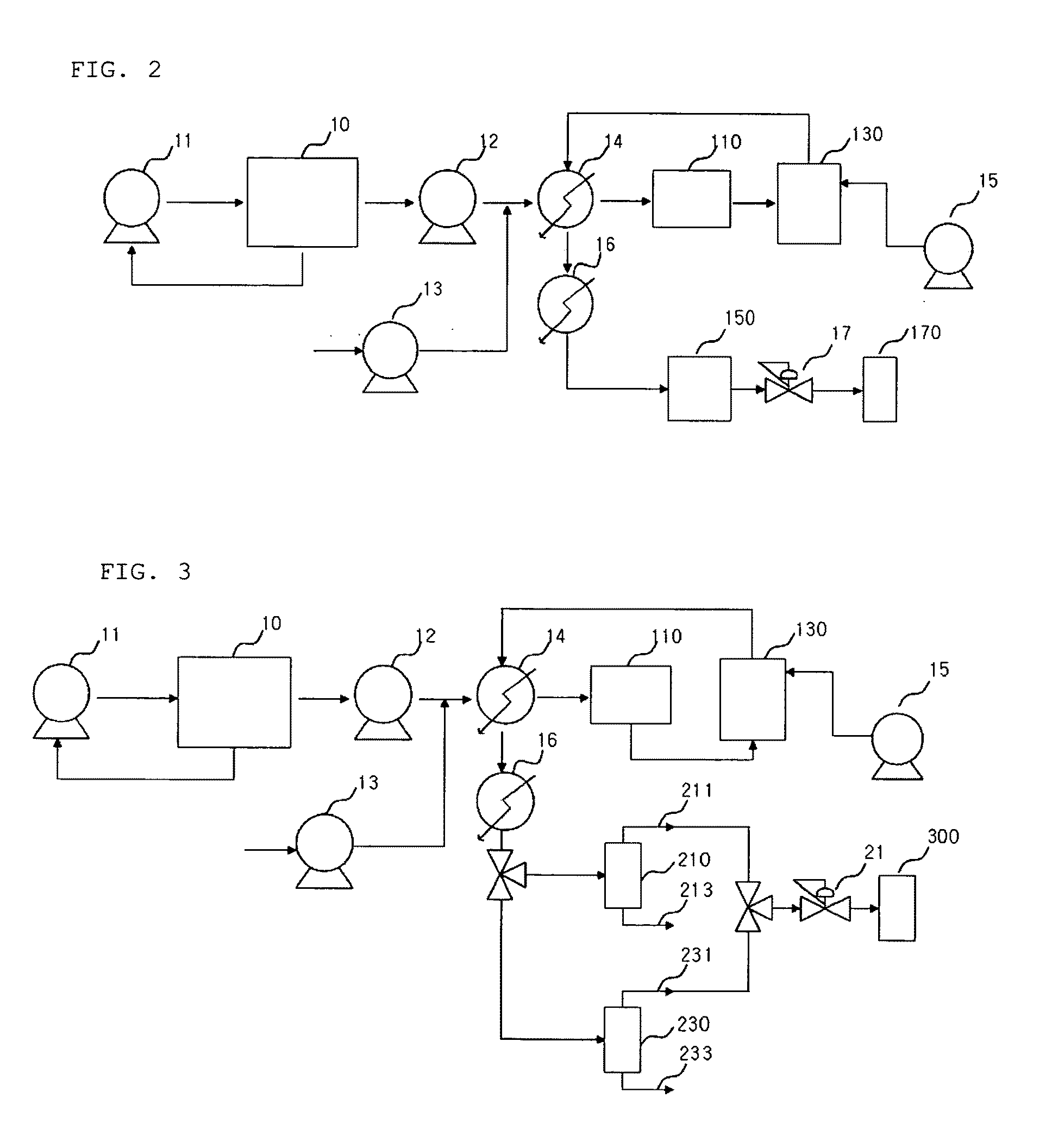Continuous method and apparatus of functionalizing carbon nanotube
a carbon nanotube and functionalization technology, applied in lighting and heating apparatus, indirect heat exchangers, chemical production, etc., can solve the problems of corroding a reactor, not easy to handle, harm to the environment, etc., to shorten the preparation process, facilitate handling, and easily treat waste water
- Summary
- Abstract
- Description
- Claims
- Application Information
AI Technical Summary
Benefits of technology
Problems solved by technology
Method used
Image
Examples
example 1
[0086]Multi-walled CNT of 10 g and distilled water of 990 g were mixed with a circulation pump 11 and a CNT solution was prepared in the pre-treating part 10. Before the CNT solution was fed into the preheater 100 at a flow rate of 30 g / min by the CNT high-pressure feeding pump 12, oxygen in a gas state compressed at 245 to 252 atm was mixed with the CNT solution at a flow rate of 0.8 g / min at the front end of the heat exchanger 14 and the mixture was fed into the preheater 100 preheated into 200 to 260° C. by the heat exchanger 14.
[0087]The preheated mixture was fed and functionalized into the functionalizing reactor 130 under the subcritical water condition of a temperature of 300 to 360° C. and 230 to 250 atm and the functionalized product was transferred to the heat exchanger 14 and primarily cooled down to 200° C., and then was cooled down again to a temperature of about 25° C. by the cooling down part 16, such that the continuously functionalized product of 9.8 g was obtained....
example 2
[0088]Product of 9.2 g functionalized in the same manner as Example 1 was obtained except that oxygen, which is oxidizer, was mixed with the CNT solution at a flow rate of 0.4 g / min, when preheating the mixture of the CNT solution and the oxidizer, the temperature of the heat exchanger 14 is 350 to 370° C., and the mixture was reacted and functionalized under the subcritical water condition of 400 to 450° C. and 230 to 250 atm.
example 3
[0089]Product of 18.6 g was obtained in the same manner as Example 1 except that 20 g of multi-walled CNT and 980 g of distilled water were mixed with the circulation pump 11 and the CNT solution was prepared in the pre-treating part 10.
PUM
| Property | Measurement | Unit |
|---|---|---|
| diameter | aaaaa | aaaaa |
| temperature | aaaaa | aaaaa |
| pressure | aaaaa | aaaaa |
Abstract
Description
Claims
Application Information
 Login to View More
Login to View More - R&D
- Intellectual Property
- Life Sciences
- Materials
- Tech Scout
- Unparalleled Data Quality
- Higher Quality Content
- 60% Fewer Hallucinations
Browse by: Latest US Patents, China's latest patents, Technical Efficacy Thesaurus, Application Domain, Technology Topic, Popular Technical Reports.
© 2025 PatSnap. All rights reserved.Legal|Privacy policy|Modern Slavery Act Transparency Statement|Sitemap|About US| Contact US: help@patsnap.com



